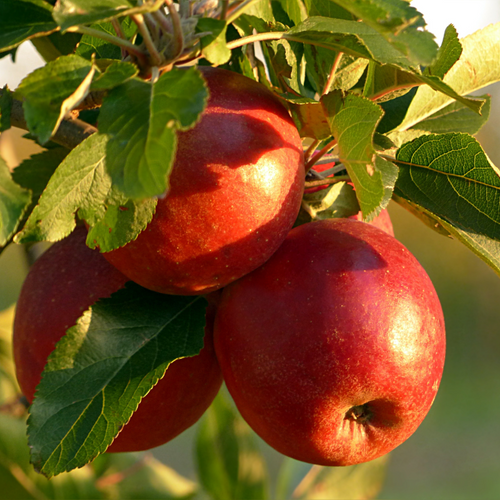What you need to remember:
- Endometriosis is a chronic disease causing inflammation in the body.
- It is a pathology responsible for severe pelvic pain, but also other symptoms that are generally less well-known, such as digestive discomfort.
- There are various natural solutions to help you fight pain and learn to manage your emotions.
- Providing the right nutritional supplements can help relieve some symptoms of this disease.
What is endometriosis?
First described in 1860, endometriosis is a chronic, disabling disease affecting up to 10% of women of childbearing age. Today, the exact origin of this disease remains poorly understood. This disease is characterized by the growth and migration of tissue similar to the endometrium, outside the uterus, the organ in which it usually grows. The growth of this tissue can be responsible for lesions, adhesions between organs, i.e. adhesion between tissues, and cause inflammation in the body. This disease manifests itself in different forms and can affect different organs, such as the ovaries, bladder, vagina, rectum, etc. Each endometriosis is unique, we speak more of “endometriosis”. It is a disease that considerably alters the quality of life.
What are the main symptoms of endometriosis?
The main symptoms found in cases of endometriosis vary from one person to another. They most often appear during adolescence, and evolve according to the woman's menstrual cycles.
We mainly find:
- Chronic pelvic pain , i.e. located below the navel, and occurring in 86% of cases.
- Dysmenorrhea , or severe pain triggered during menstruation , is reported in 75 to 90% of cases.
- Dyspareunia , or pain during sexual intercourse, in 30 to 70% of cases.
- Chronic fatigue
- Infertility , a sign sometimes highlighting the presence of the disease, in the case of an asymptomatic person. This is encountered in 30 to 40% of people who are affected. Even today, the cause explaining the infertility encountered during endometriosis is still not elucidated.
What are other lesser-known symptoms of endometriosis?
Other symptoms are found in certain cases, and are less well known, among them we find:
- Digestive disorders (35% affected at the intestinal level), such as diarrhea or constipation , or even an alternation of the two, abdominal pain, bloating , nausea, vomiting. These symptoms may be present only during menstruation, or even accentuated at this time of the cycle. In the context of so-called “rectal” endometriosis, some women may also experience significant pain when passing stools, and even particularly during menstruation.
- Urinary disorders (23% affected at bladder level)
Most often, these disorders are related to the bladder. Among the urinary symptoms, we find difficulties and/or pain felt when urinating, an increase in urination (the action of urinating), urinary urgency, possibly accompanied by urinary incontinence, and hematuria, i.e. the presence of blood in the urine.
- Lower back pain 66%
- Sleep disorders linked to repeated pain
- Emotional disturbances (62%, anxiety, increased sensitivity)
How to treat the symptoms of endometriosis?
1 - Consult a doctor
In the context of this pathology, it is important to seek the advice of a doctor and specialists in the disease, to find the most suitable medical treatment, and to monitor the progress of the disease.
2 - Adopt an anti-inflammatory diet
Adjusting your diet can help prevent and reduce inflammation generated in the intestines.
So, adopting this diet , firstly, means limiting excesses, that is to say avoiding eating too much fat, too much sugar , too much salt, and too much acid . Then, secondly, favour the consumption of fibre , antioxidants, vitamins and omega-3. These are mainly found in whole grains, fruits and vegetables, legumes, oily fish (salmon, mackerel, sardines, etc.), vegetable oils (particularly rapeseed, flax, hemp and walnut oils), and oilseeds.
As part of optimal intestinal health , the consumption of fermented foods such as sauerkraut or yogurts provides probiotics to the intestinal microbiota, and thus modulate the inflammation generated in the intestines .
Finally, the consumption of mild spices such as turmeric has anti-inflammatory properties. It reduces the production of pro-inflammatory substances produced by cells of the immune system and decreases the expression of enzymes playing a role in inflammation.
3 - Learn to manage your emotions
Studies tend to show that endometriosis increases the level of anxiety and depression . Learning to manage one's emotions is therefore essential in the context of endometriosis.
With this in mind, various methods exist.
#1 - Mindful eating
This advice may seem trivial, but it is often overlooked in our modern lifestyles.
Mindful eating involves being fully present and aware during mealtimes. At that moment, we witness the sensations, thoughts, and emotions that the act of eating arouses in us.
When we eat mindfully, we understand and respect our body's needs, which will have the benefit of reducing stress .
It is therefore recommended to eat sitting down, in a calm environment, for a period of 20 minutes, the time needed to feel a sense of satiety. We should also be careful to eat when the feeling of hunger is felt, and to stop when we feel “satisfied”, and not “full”.
#2 - Relaxation, sophrology, hypnosis
These three techniques aim to improve stress management, relaxation and general well-being .
Relaxation allows for total release through deep breathing, visualization techniques (soothing places or moments), muscle relaxation, and meditation.
Sophrology will also allow relaxation, an improvement in stress and emotion management , while also ensuring that the ability to concentrate and self-confidence are strengthened.
Hypnosis, performed by a third party or by oneself, is a state of altered consciousness, which, when practiced in the health field, allows for better management of pain, anxiety disorders, and stress. This type of state allows a person's reality to be changed through the unconscious, which is more likely to accept certain suggestions and/or changes.
#3 - Acupuncture
This technique, originating from traditional Chinese medicine, aims to rebalance the flow of energy circulating in the body using fine needles.
It helps reduce the perception of pain, which has a major impact in the context of endometriosis, reduces the inflammation generated, improves blood circulation , particularly in the pelvis, and balances hormone levels in the menstrual cycle.
4 - Practice suitable physical activity
Physical activity also has an impact on pain reduction because it causes a release of endorphins, happiness hormones, which reduce pain (analgesic action of endorphins). The release of these hormones, but also that of serotonin, improves mood and well-being in general.
The practice of yoga is now well known for reducing stress, decreasing muscle tension, and promoting relaxation. With this in mind, yin yoga presents gentle postures, held for 2-3 minutes to lead to total relaxation.
5 - Heat
The application of heat increases the vasodilation of blood vessels, and thus the supply of oxygen. It will have a relaxing effect on the muscles, and thus relieve muscle spasms occurring in endometriosis. This effect will have the benefit of relieving the pain felt.
Applying a hot water bottle or taking a warm bath can help relieve chronic pain caused by endometriosis.
6 - Take a course of food supplements
#1 - For the intestinal microbiota
Taking a course of probiotics helps modulate inflammation and reduce the pain caused by endometriosis. They contribute to the balance of our intestinal microbiota , healthy digestion and therefore optimal transit .
#2 - For the vaginal microbiota
In case of endometriosis, the vaginal microbiota can also be negatively impacted. Providing probiotics containing strains adapted to this microbiota allows its balance and limits the occurrence of inconveniences such as mycoses or cystitis .
7 - Glutamine cure
Glutamine , the most abundant amino acid in the body, plays an important role in the integrity and optimal health of the intestinal wall of your belly . It helps limit inflammation throughout the body.
Probiotics rely on this barrier and their effectiveness depends on its stability.
What DIJO routine to relieve endometriosis?
1 - Strengthen the intestines in depth
At DIJO, the Concrete Intestines pack, for a complete action at the intestinal level. It combines the Essential probiotics and our Glutamine boost , to rebalance the intestinal microbiota with good bacteria , while strengthening your intestinal barrier, and thus limit the occurrence of painful symptoms caused by endometriosis.
2 - Take care of your vaginal flora
In parallel with this pack, you can complete your treatment with our Intimate flora probiotics product, and stock up on probiotics for your intimate flora .
Sources:
[1] Rosenbaum, J., Bourdel, N., Khochbin, S., Kvaskoff, M., Matsuzaki, S., Mechta-Grigoriou, F., ... & Vaiman, D. (2022). Avenues for reflection for endometriosis research in France. médecine/sciences , 38 (3), 274-279.[2] Dupas, C., & Christin-Maitre, S. (2008, September). What's new on endometriosis?. In Annales d'endocrinologie (Vol. 69, pp. S53-S56). Elsevier Masson.
[3] Chapron, C., & Candau, Y. (2018). Misconceptions about endometriosis . The Blue Rider.
[4] Koller, D., Pathak, GA, Wendt, FR, Tylee, DS, Levey, DF, Overstreet, C., Gelernter, J., Taylor, HS, & Polimanti, R. (2023). Epidemiologic and Genetic Associations of Endometriosis With Depression, Anxiety, and Eating Disorders. JAMA network open , 6 (1), e2251214. https://doi.org/10.1001/jamanetworkopen.2022.51214
[5] Li, PS, Peng, XM, Niu, XX, Xu, L., Ng, EHY, Wang, CC, ... & Liang, RN (2023). Efficacy of acupuncture for endometriosis-associated pain: a multicenter randomized single-blind placebo-controlled trial. Fertility and Sterility , 119 (5), 815-823.

















